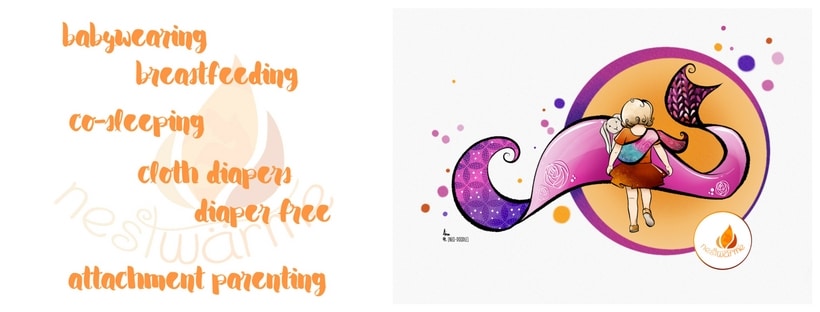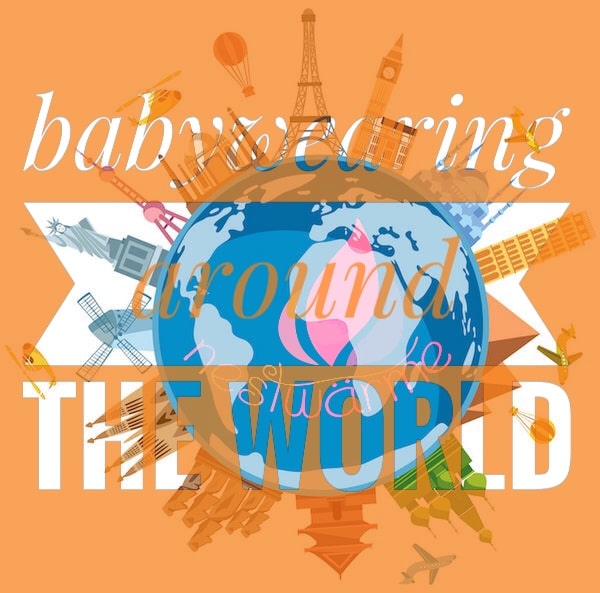A warm welcome to Junko Kato from Urayasa City (famous for Tokyo Disneyland), Chiba Prefecture, in Tokyo, Japan. This interview is very special to me as I’ve not only been to Japan twice but also studied Japanese during 2,5 years in the university. I started to learn Japanese before but I have forgotten a lot, unfortunately. 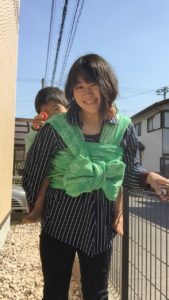
Nestwärme: How popular is babywearing in Japan?
Japan has an old tradition of carrying babies on the back, which is called “onbu” in Japanese. Not only mothers but also nannies and elder siblings used to do so in everyday life. This culture has been passed down to the present time.
Today, a lot of people carry their children in the front or on the back. However, as carrying babies is such a natural part of the Japanese life, the concept of “learning about babywearing” is not really familiar to the Japanese. Therefore, we actually see a lot of problematic baby carriers, wrong usages of carrying devices and misguided ways of holding the babies.
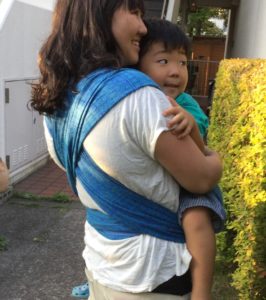
I learned about real babywearing when my younger son was 1 year old. Until that time, I used a baby carrier every day, but I carried my son way too low and not close enough. For me at that time, carrying was not really comfortable. My first encounter with a woven babywrap was a shocking experience: so comfortable, so light, and my son was so close.
Raising my children suddenly became so much easier, and life was so much more fun. I decided I had to share this experience with others, and so I decided to become a babywearing consultant. I finished the Babywrap Advisor Course by the Didymos distributor in Japan, the Babywearing Concierge Course by Japan’s only babywearing school “Babywearing Labo” and took the Basic Course at Trageschule Dresden.
How important is it for you and/or your clients to wear babys ergonomically?
For me: I feel that my son’s (almost 4 yrs.) angle of the legs is still important. If his legs point downwards, he feels really heavy, so I try to keep him in the spread-squat position. For my clients: Many of my clients are so preoccupied with understanding the structure of their carrier and reducing their own burden that they can’t yet think about the correct posture of their babies. For babies that do not yet obtain head control, parents are foremost concerned about the head support.
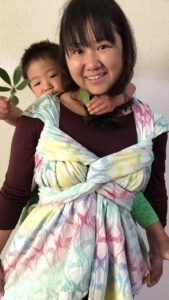
Number of persons whom I teach how to use babywearing tools or about safe babywearing = approx 20/month. Number of persons whom I teach 1:1 = approx 10/month.
What’s the thing, most parents ask or have trouble with concerning babywearing in Japan?
Most want to know whether they are using their babywearing device in the right way.
How big is your « consultancy stash »?
11 types and Baby dolls. Babywrap(woven/stretch, SSC (Ergobaby, Manduca, JPMBB), Cross type Carry. Sling(Ring/Pouch), Onbuhimo(Onbu-mocco, Omoide-onbu), Mei-tai.
What’s your favourite wrap and/or carrier and what’s the favourite product chosen by your clients ?
For me it’s a babywrap and a Ring Sling from Didymos and as carrier it’s the Ergobaby Performance Ventus. Also my Clients prefer the Ergobaby(Ergobaby has a huge share of the Japanese market. Almost everyone uses their carriers.) Clients looking for something different than Ergo are typically interested in back carriers (Japanese: Onbuhimo) that allow to carry the baby high on the back.
What’s the word for babywearing in your language?
抱っこ dakko / おんぶ onbu
Thank you so much for this interview and the insights you gave us on babywearing in Japan – very interesting!
どうもありがとうございました! ヽ(ヅ)ノ
See more of Junko Kata on her website, follow her on Dear Babywearing Urayasu on Facebook and Dear Babywearing on Instagram. Photos by Junko Kato.
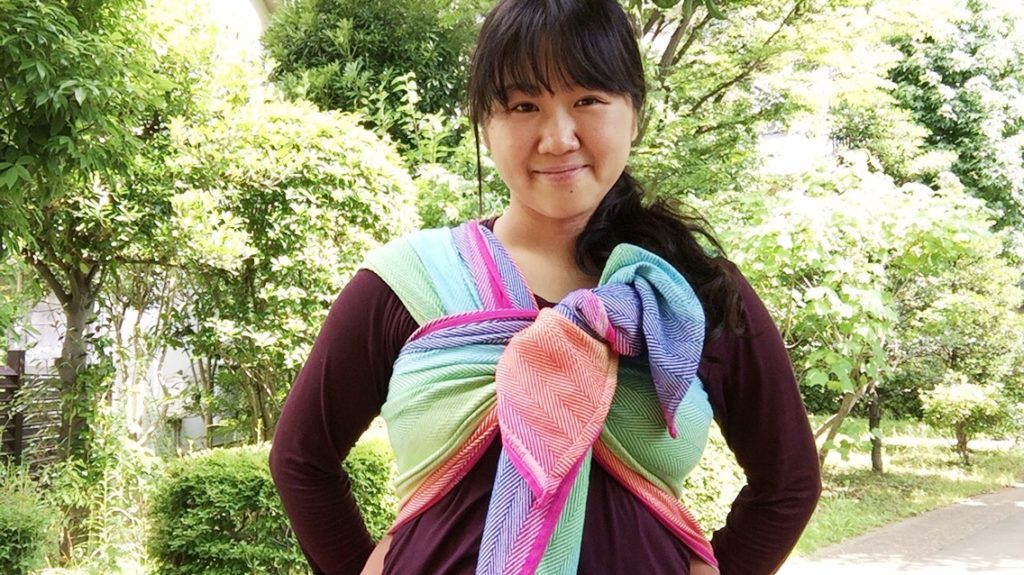
Read on
- Babywearing in Greece
